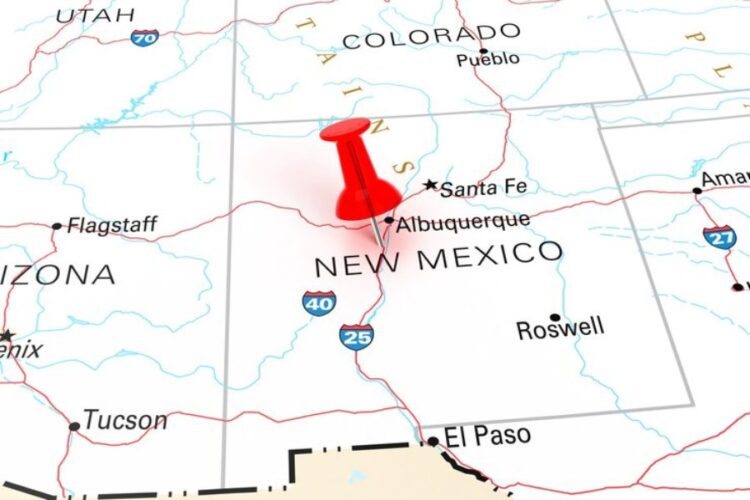New Mexico has become a focal point in discussions surrounding cannabis law reform. A series of legislative changes have reshaped the state’s policy landscape toward marijuana use. This article reviews the timeline of cannabis regulation, details the current legal status, and examines the economic outcomes linked to the evolving market. The piece highlights public attitudes, regulatory challenges, and economic opportunities that have emerged since legalization.
Is weed legal in New Mexico?
Yes, recreational marijuana remains legal in New Mexico. Residents and qualified visitors can possess and use cannabis following guidelines set forth by state law. The legal regime also includes provisions for controlled retail sales and regulated cultivation.
A Historical Perspective on Cannabis Policy in New Mexico
New Mexico’s path toward cannabis legalization did not begin overnight. The state enacted its first medical cannabis laws several years ago, paving the way for later reforms in recreational use. The evolution of legislation resulted from ongoing debates in both legislative chambers, community outreach, and shifts in public opinion.
Medical cannabis received formal approval in New Mexico many years before recreational use gained attention. Initially, activism emphasized therapeutic benefits and patient access. Rapidly, interest expanded toward adult use when other states adopted similar policies. Legislators observed the experiences of neighboring states, which encouraged reconsideration of strict prohibition policies.
State lawmakers adopted measures that permitted adults 21 and older to possess limited quantities for non-medical use. The law allows adults to possess up to 2 ounces of cannabis in public, along with specific limits for concentrated forms. Regulations address retail distribution, cultivation rules for personal use, and compliance measures for public health and safety.
Political support for cannabis reform grew stronger over time. Voter surveys and public demonstrations clearly exhibited community backing for reduced penalties related to cannabis. The transition from medical to recreational cannabis led New Mexico to introduce comprehensive guidelines that integrate legal sales, tax collection, and quality assurance. Legislative details receive annual reviews, ensuring that both consumer safety and revenue collection remain paramount.
The Current Legal Framework for Cannabis in New Mexico
New Mexico features a regulatory framework that defines possession limits, licensing protocols for vendors, and enforcement criteria for infractions. State officials have remarked on the need to separate medical access from recreational use while ensuring that county and city regulations complement state law.
Key Provisions in the Law
- Possession Limits: Adults can legally possess up to 2 ounces of cannabis. Specific thresholds apply to concentrates.
- Retail Licensing: The state issues licenses for cultivators, processors, and distributors. Strict conditions apply for quality control and reporting.
- Home Cultivation: Residents are allowed to grow a limited number of cannabis plants if certain restrictions and permit requirements are met.
- Taxation: Cannabis sales incur state and local taxes that fund public services. Revenue often supports community projects and public health programs.
- Zoning: Retail and production facilities must adhere to zoning laws that restrict their location near schools, hospitals, and similar institutions.
The legal framework evolved as the state balanced interests between personal freedom and public health. Regulators continue to update policies based on community feedback and emerging research on cannabis use and its effects on society.
A Quick Overview: Cannabis in New Mexico Today
Various segments of New Mexico society watch the evolution of cannabis policy. Law enforcement agencies work closely with regulatory bodies to implement the laws effectively. Health department officials monitor the impact on public health outcomes, adjusting strategies as needed.
Public Opinion and Social Impact
Community sentiment in New Mexico supports cannabis legalization largely. Numerous polls reveal that a majority of voters identify beneficial aspects of legalization. Residents cite reduced law enforcement strain, additional revenue for public services, and diminished penalties for non-violent offenses.
A survey conducted by a local research organization highlighted that more than 65% of voters support legal recreational use. Changing attitudes extend to older generations, who note that regulated markets reduce unsafe street sales. Community outreach programs, educational seminars, and open discussion forums enhance public understanding of cannabis effects and responsible use.
Data on Community Views
Below is a table summarizing data on public opinion regarding cannabis legalization in New Mexico, according to several polling organizations:
| Survey Source | Percentage in Favor | Percentage Opposed | Sample Size | Year |
|---|---|---|---|---|
| New Mexico Public Poll | 68% | 29% | 1,200 | 2022 |
| Southwest Research Group | 64% | 32% | 1,000 | 2021 |
| Statewide Opinion Survey | 67% | 30% | 950 | 2022 |
These polling numbers reflect a significant shift in public attitudes. Research indicates that legalization leads to fewer criminal cases related to cannabis possession. Residents benefit from lower rates of incarceration for minor offenses and greater focus on community safety initiatives.
Economic Effects of Cannabis Legalization
The transition to legal cannabis has provided a new revenue channel for New Mexico. Tax income from cannabis sales has grown steadily since legalization. Municipal and state government earnings help fund education, infrastructure improvements, and public health programs.
Job Creation and Business Development
Local entrepreneurs have established numerous new businesses in cultivation, retail sales, and related support services. As the market expanded, job prospects increased across various sectors. Businesses also contribute to secondary markets by requiring professional services such as legal counsel, accounting, and security.
The economic benefits of cannabis legalization derive from multiple facets of taxation. Sales tax includes revenue for state funds, while local governments impose additional fees that support community projects. As more businesses open their doors, New Mexico experiences growth in technology, supply chain logistics, and manufacturing. An industry report in 2023 indicated that over 5,000 jobs directly tie to cannabis-related businesses in the state.
Below is a table outlining information on economic benefits related to cannabis employment figures in New Mexico:
| Economic Indicator | Fiscal Year 2021 | Fiscal Year 2022 | Fiscal Year 2023 (Estimate) |
|---|---|---|---|
| State Revenue from Cannabis | $15 million | $20 million | $25 million |
| Jobs Created (Direct) | 3,200 | 4,000 | Over 5,000 |
| Number of Licensed Retailers | 75 | 100 | 120+ |
| Local Tax Revenue | $7 million | $10 million | $12 million |
These economic figures support the notion that legal cannabis fosters growth and diversification within the state’s economy. Business leaders and policymakers evaluate ongoing data to optimize tax collection and stimulate industry expansion.
Tax Revenue Allocation and Public Programs
State policymakers dedicated a portion of cannabis tax revenue to community programs. Funding often supports substance abuse prevention, public school budgets, and local infrastructure repair. Officials complete quarterly reviews to analyze budget performance and adjust allocations accordingly. Municipalities report that cannabis tax revenue supplements already stressed budgets, thus proving beneficial for extra community funding.
Regulatory Oversight and Challenges
State agencies monitor the cannabis industry closely to ensure compliance with safety standards and legal mandates. Health inspectors conduct routine checks in retail locations and production sites, and law enforcement coordinates with regulatory bodies to guard against illegal distribution. These measures maintain quality and protect public safety.
Enforcement of Zoning and Licensing
Local governments enforce strict zoning laws to prevent cannabis facilities from operating near sensitive areas. Regulations also extend to transportation and responsible consumption. Licensed companies face routine checks and must submit detailed sales records that aid in tax collection. Inspections occur routinely, and violations trigger fines, license suspensions, or other penalties.
A robust reporting system supports transparency in this new market. Operators are required to submit weekly inventory data to state databases. Audits occur to confirm that recordkeeping meets regulatory standards. Officials report that these initiatives reduce the incidence of non-compliance and support a transparent marketplace that benefits observers and citizens alike.
Safety and Quality Standards
Quality control remains a central challenge. The state enforces product testing protocols to guarantee that cannabis products meet health and safety standards. Testing laboratories identify contaminants, verify cannabinoid concentrations, and assess the overall quality of products available in the market. Compliance officials receive substantial support from independent laboratories that execute quality assessments frequently.
Public safety campaigns aim to educate consumers about responsible use. Information on dosing, safe storage, and potential risks accompanies product labels. Retailers provide detailed guidelines and contact information, encouraging users to seek verified sources and avoid unregulated products.
Social and Health Considerations
Cannabis legalization influences community health in several ways. Health officials monitor consumption patterns, treatment facility admissions, and traffic safety statistics. Recent studies indicate that regulated markets associate with fewer emergency room visits triggered by contaminated products. Public education campaigns direct attention to responsible consumption and mitigate misuse.
Health Research and Community Wellness Programs
Medical professionals track the health effects of cannabis to create public guidelines that prioritize safety. Researchers support studies that explore the benefits and risks of cannabis use for various conditions. Policy advisors use these insights to shape initiatives that balance consumer freedom with possible hazards. Educational programs reach local community centers, and webinars provide updates that keep the public informed.
Researchers from local universities coordinate with state health departments. These institutions conduct clinical trials that analyze the influence of cannabis on chronic pain, anxiety management, and other aspects of health. Ongoing research contributes to a growing body of knowledge that informs both clinical practices and legislative updates.
Traffic Safety and Driving Regulations
Alarming headlines often emerge about drug-impaired driving. New Mexico maintains strict penalties for driving under the influence of cannabis. Authorities incorporate roadside testing programs, although advancements in technology help improve accuracy in detecting cannabis impairment. Public safety authorities distribute guidelines that remind drivers to avoid operating vehicles under any impairment conditions.
Law enforcement officers receive specialized training to balance the nuances of cannabis-related offenses. Traditional field sobriety tests undergo revisions to reflect the unique characteristics of cannabis. Rural and urban police departments collaborate with state agencies to share best practices and ensure consistency across enforcement protocols.
Industry Impact on Agricultural Practices
New Mexico experiences benefits outside the traditional economic sectors. The state’s agricultural community participates increasingly in cannabis cultivation. Farmers with extensive experience in crop management transition to cannabis growing practices. Soil management, water conservation, and pest control techniques receive adaptation for this new crop. Agricultural experts deliver training sessions that help growers optimize yields while maintaining traditional farming values.
Cannabis cultivation presents challenges such as climate adaptation and regulatory compliance. Industry experts provide technical assistance by hosting seasonal workshops that clarify permitted cultivation practices. Funding from state-sponsored initiatives assists small-scale growers, enabling them to compete in a growing marketplace. Additionally, research centers work with agricultural departments to create cutting-edge techniques specific to the plant’s growing requirements.
Some key statistics representing the agricultural shift in New Mexico appear in the following table:
| Agricultural Metric | Pre-Legalization (2019) | Post-Legalization (2021) | Projected Growth (2023) |
|---|---|---|---|
| Number of Cannabis Farms | Less than 50 | Approximately 75 | 100+ |
| Average Crop Yield per Acre | N/A | 1,500 pounds | 1,800 pounds |
| Increase in Agricultural Revenue | N/A | $5 million | $7 million |
| Investment in Farming Infrastructure | Minimal | Moderate investment | High investment |
This table illustrates the transition from an experimental phase to a more stable market environment for cannabis cultivation. The agricultural sector experiences diversification in product lines, including hemp derivatives and specialized strains suited for different climatic zones.
Tourism and Local Business Opportunities
The legalization of cannabis spurred local tourism. Travelers visiting New Mexico showed interest in cannabis-related activities, educational tours, and dispensary visits. Tourism promoters include cannabis tourism as part of broader itineraries that combine local culture, cuisine, and outdoor adventures.
Cannabis Tourism Initiatives
Several businesses offer guided tours of licensed cultivation facilities and retail centers. These tours educate visitors on cultivation practices, product testing, and the importance of compliance. Local governments occasionally authorize cannabis festivals that enhance community engagement and educate participants on industry practices. Tourism agencies report increased inquiries and reservations resulting from such programming.
Local hotels and restaurants incorporate cannabis themes into neighborhood tours, highlighting unique indoor design elements and outdoor attractions. Business owners sharpen their strategies by cooperating with cannabis enterprises, expanding services that cater specifically to cannabis tourists. Retailers highlight state-approved brands, while local guides align their itineraries with federally compliant locations.
Financial Investment in the Cannabis Sector
Investment professionals assess cannabis ventures with a mix of caution and opportunity. Banks and financial institutions gradually ease restrictions for cannabis-related businesses. Despite federal constraints, state-issued licenses provide access to financial services and banking solutions that comply with state laws. Investors monitor market trends and adjust portfolios as data emerges on revenue potential.
The financial capital entering the cannabis market diversifies portfolio strategies. Investors track revenue streams from retail sales, cultivation, and ancillary services. Market reports state that cannabis companies in New Mexico have attracted investments exceeding $100 million collectively since legalization. Financial analysts note that the improved transparency and structured supply chain enhance investor confidence.
A Closer Look at Investment Trends
Capital inflow supports a variety of business models. Private equity funds participate in larger retail operations, while individual investors back start-ups focusing on cultivation or product development. Financial institutions extend credit facilities within state guidelines, allowing businesses to remodel existing facilities or upgrade equipment. Economic analysts track trends such as annual growth rates, profit margins, and regional market penetration tests.
A sample outline of investment trends appears in the table below:
| Investment Category | Average Annual Growth Rate | Total Investment (Estimated) | Comments |
|---|---|---|---|
| Retail Operations | 12% | $45 million | Increasing consumer demand |
| Cultivation and Processing | 15% | $35 million | Technology adoption rising |
| Ancillary Services | 20% | $20 million | Expansion in security, tech |
Data in the table reflects that the cannabis industry remains an active field for financial growth over the next few years. Prospective investors maintain caution, yet new market entrants report significant early-stage success.
Law Enforcement and Regulatory Coordination
Agencies responsible for public safety collaborate to preserve a controlled environment for cannabis. Coordination begins at the state level and extends through local jurisdictions carrying out limited checks. Law enforcement focuses on targeting illicit operations that attempt to bypass legal processes.
Training and Coordination Efforts
Police departments conduct specialized training sessions on cannabis detection and field operations tailored to cannabis-related incidents. Coordinators from local agencies participate in state-led workshops to ensure knowledge sharing and consistency. Training centers integrate updated research findings regarding chemical testing methods so operatives can accurately handle cases of suspected cannabis impairment. Such training proves essential when citizens confuse regulated usage with illegal possession marks.
Policy analysts note that clear guidelines decrease confusion among enforcement personnel. Agencies reported improved cooperation between state and local levels after implementing electronic data sharing, thereby streamlining compliance audits. Cross-jurisdictional task forces address cross-border issues and support remote investigations.
Public records indicate that law enforcement actively partners with community outreach programs to educate citizens on legal distinctions between permitted use and criminal activity. By hosting town halls and community workshops, police departments clarify state guidelines and answer resident queries. These efforts emphasize transparency, accountability, and constructive dialogue with community members.
Future Developments and Legislative Revisions
New Mexico officials remain open to policy refinement. Lawmakers schedule periodic reviews that consider emerging trends in cannabis research and market performance. Experts debate the potential impacts of federal regulations on the state market. Legislators monitor customer feedback, economic data, and public health outcomes to inform adjustments to cannabis laws. Reviews occur regularly to acknowledge acquisitions in industry structure, technology advances, and changing demographic preferences.
Areas of Potential Change
Several topics often appear in discussions concerning future legislative changes:
- Adjustments to possession or cultivation limits that respond to consumer behavior.
- Expansion of licensing opportunities, allowing more small-scale producers to join the market.
- Optimization of tax rates to balance public revenue needs with competitive pricing.
- Enhanced safety protocols based on evolving health research.
- Revisions to cross-state sales regulations that impact supply chains.
State regulators plan follow-up studies to assess the long-term social and economic impacts of cannabis legalization. Stakeholders from both the private and public sectors report interest in initiatives that clarify industry standards without harming established market practices. Lawmakers consider research data, community input, and market analysis, and these factors guide the drafting of future bills.
Experts in public policy stress that legislative modifications must account for diverse demographics and regional differences. Rural areas often express concerns about potential environmental effects of large-scale cultivation, while urban centers focus on mitigating public nuisance issues. The state government consults extensively with environmental agencies to ensure that future regulations integrate sustainable agricultural practices and safe waste management protocols.
Environmental Considerations and Sustainable Practices
Expanding cannabis cultivation presents environmental challenges alongside economic prospects. Cultivators commit to practices that protect water resources and apply controlled use measures for fertilizers and pesticides. Local governments sometimes sponsor pilot programs that test eco-friendly irrigation methods. Sustainable cultivation emerges as a priority, and growers explore renewable energy options to power production centers.
Environmental regulators assess cultivation sites by monitoring:
- Water consumption data in cannabis farms.
- Waste disposal and recycling methods for packaging materials.
- Emissions from cultivation operations.
Researchers from state universities partner with agricultural extensions to test innovative practices. Pilot studies examine greenhouses with controlled climates that reduce water usage and optimize energy efficiency. Data generated from these initiatives inform broader state guidelines on sustainable practices. Regulators track usage metrics to adjust recommendations and certify growers who meet rigorous standards.
State agencies also explore partnerships with environmental technology startups. These companies introduce sensors that monitor soil moisture levels and optimize fertilizer application. The integration of these technologies benefits smaller and larger growers alike. Agencies report that projects combining sustainable farming techniques with cannabis cultivation produce promising results and overall improvements that benefit local ecosystems.
Social Justice and Community Reinvestment
Cannabis policy transformation includes initiatives addressing social equity. Public officials recognize that enforcement of prohibition affected disproportionately certain communities. Assistance programs aim to rectify past legal inequities related to cannabis incidents. Local governments implement programs that offer grants, reduced licensing fees, and technical support to entrepreneurs from communities previously penalized under strict cannabis laws.
Social Equity Programs and Funding
Community reinvestment initiatives materialize through state-sponsored programs. Officials administer funds that support education, health care, and housing in communities with historically high rates of cannabis-related arrests. Advocacy groups actively collaborate with policymakers to ensure that new regulations create economic opportunities for individuals affected by past prohibition policies. Several programs also target youth education to prevent drug misuse and offer career training within the emerging cannabis industry.
Details on social equity investments are summarized in the table below:
| Program Type | Target Group | Financial Commitment | Key Services Provided |
|---|---|---|---|
| Grant Programs | Entrepreneurs from impacted areas | $2 million per year | Business development, licensing support |
| Reduced Fee Licensing | Minority-owned enterprises | Variable reductions | Expedited review, technical assistance |
| Community Reinvestment | Neighborhoods with high arrest rates | $3 million annually | Education, healthcare, housing improvements |
Officials track the progress of these programs through regular audits and community feedback sessions. The overall objective remains to create a more inclusive market environment while repairing some of the long-term societal impacts that prohibition wrought.
Legal Implications and Federal-State Dynamics
The discrepancy between state and federal law maintained relevance in public discourse. New Mexico follows its state guidelines, but federal law continues to classify marijuana as a controlled substance. This legal divide creates issues related to banking, taxation, and interstate commerce. Legal experts emphasize that federal reform remains necessary to align national law with state practices.
Navigating Federal Regulations
Despite the state’s supportive policy stance, New Mexico businesses encounter challenges with federal banking restrictions. Many banks avoid dealing with cannabis firms due to federal sanctions. Business owners depend on cash transactions until federal policies adjust. Legal professionals advise corporations to maintain strict adherence to state guidelines while preparing contingency plans if federal enforcement intensifies.
Some advocates encourage legislative efforts at the federal level to clarify banking and taxation policies. Meanwhile, state agencies work closely with industry groups to develop best practices that minimize risk and maintain legality. Industry representatives report that the uncertainty surrounding federal enforcement encourages cautious expansion and influences investment decisions.
Legal organizations also work to protect licensed operators from federal scrutiny. These groups host seminars and distribute guidance materials that detail federal regulations and highlight strategies to mitigate legal risks. Business associations in New Mexico periodically meet with federal representatives to discuss the challenges the industry faces under current regulations.
Consumer Experience in the Legal Market
Cannabis users in New Mexico enjoy a regulated market that provides higher product quality and safety standards compared to illicit alternatives. Retail outlets offer extensive product selections, including edibles, vape pens, and topicals. Experienced staff guide consumers through product choices that align with their preferences and health considerations. Retailers invest in training programs ensuring knowledgeable interactions with customers.
Consumer Safety and Education
Dispensaries implement measures that verify customer age, track sale limits, and provide educational material on consumption. Consumers also access online resources curated by state regulators. Information spans topics such as proper dosing, recommended storage practices, and details on possible side effects. Retailers collaborate with health experts to create brochures and host in-store informational sessions.
Feedback surveys from customers indicate that legal cannabis boosts consumer confidence. Reviews on licensed outlets highlight the transparency of product labels and the professionalism of staff. Users appreciate the availability of detailed lab testing results that affirm product quality and safety.
Local community centers often host informational sessions that detail the current cannabis laws, safe consumption guidelines, and available support services for individuals seeking more information. Many public libraries also incorporate relevant legal texts and scientific research in their resources related to cannabis.
Challenges and Continuing Debates
Although the state has made clear progress with legalization, several challenges remain that stakeholders actively address. Critics question whether the current legal framework adequately mitigates public health risks. Concerns mount regarding youth access, impaired driving statistics, and the potential for increased usage among vulnerable populations.
Addressing Youth Access
California, Colorado, and other states have developed strict monitoring systems to limit cannabis access to minors. State officials in New Mexico have adopted similar practices. Retailers remain vigilant through rigorous age verification at the point of sale. Educational outreach emphasizes the importance of responsible use particularly within families and schools. Law enforcement partners with community organizations to run preventive campaigns and monitor local compliance.
Evaluating Public Health Data
Medical research centers continue to monitor public health impacts of cannabis legalization. Peer-reviewed studies examine the incidence of cannabis-related hospital visits and long-term cognitive effects. Health officials report that emergency room visits related to cannabis have not risen dramatically since legalization. Data collected over the past two years supports that controlled legalization supports individual choice while minimizing systemic risk.
Health research teams often compare their data with other states that legalized cannabis earlier. A recent multi-state analysis provided the following data on emergency room visit trends:
| State | Pre-Legalization ER Visits per 100,000 | Post-Legalization ER Visits per 100,000 |
|---|---|---|
| New Mexico | 35 | 37 |
| Colorado | 33 | 36 |
| California | 30 | 32 |
Analysts interpret that the slight increases result from public awareness and reporting improvements rather than a large-scale health crisis. Researchers continue to gather more data to refine these findings and offer recommendations on additional support programs.
Balancing Innovation with Regulation
Industry leaders stress that aligning business innovation with state mandates remains a high priority. The industry monitors emerging trends such as product diversification and advances in extraction techniques. Regulators update guidelines on a routine basis. Compliance officers attend public meetings and continue training sessions to reflect industry evolution. Stakeholders participate in open consultations to share their views on potential policy refinements.
Government agencies also coordinate with international regulatory bodies to align with best practices found in other cannabis-friendly markets. Trade delegations sometimes visit jurisdictions abroad to review industry models and explore collaborative projects in research and technology-sharing.
Legal Market Versus Black Market Dynamics
One of the core arguments supporting legalization rests on the reduction of illicit activities. In New Mexico, authorities claim that legal access to cannabis has lowered the black market’s appeal. Licensed retailers offer safe alternatives to products that some users might otherwise obtain illegally. This shift contributes to overall public safety and removes funds from unregulated operations.
Statistical comparisons in law enforcement reports confirm that arrests related to cannabis possession have dropped. State records indicate that arrests linked to cannabis reduced from over 1,500 annual cases before full legalization to less than 500 cases after the law took effect. These numbers demonstrate the effectiveness of controlled legalization in diminishing the reach of black market operations.
Community feedback also reflects the sentiment that regulated outlets provide safer consumer protections and better product transparency. In areas with active cannabis dispensaries, residents report that street sales have diminished alongside improved public education on legal channels available for purchase and consumption.
Educational Impacts and Community Outreach
Local institutions include cannabis education in their curricula and community outreach programs. Community colleges offer courses that examine cannabis’s agricultural aspects, regulatory frameworks, and economic outcomes, thereby preparing a workforce for the emerging industry. Workshops held in community centers, libraries, and online platforms help to educate residents about current laws and safe consumption practices.
Nonprofit organizations partner with local health departments to develop educational materials that clarify state guidelines. These initiatives reduce misinformation and encourage an environment of shared knowledge among citizens. Town hall meetings and interactive webinars give community members the chance to ask policy questions directly to experts and state officials.
Public service announcements on local media also detail the key aspects of legalization, including responsible usage, legal limits, and the importance of using regulated products. These educational efforts target diverse demographics, ensuring that information remains clear and accessible to all segments of society.
Perspectives from Industry Professionals
Business owners and cultivators contribute details about their experiences following legalization. Many report that market expansion promotes consumer options, stimulates local employment, and fosters regional economic growth. Retailers highlight that regulated sales boost tax revenue, which local governments channel into education, healthcare, and community infrastructure projects. Cultivators have transitioned from traditional crops to cannabis with minimal disruption, citing improved profitability amid competitive markets.
Interviews with local entrepreneurs reveal that the new legal environment supports innovation and professional growth. Business owners detail challenges such as adapting to updated testing standards and securing proper licenses. They also stress that the framework emphasizes responsible business practices while protecting consumer rights. Many share experiences of shifting from underground operations to establishing compliant businesses, thus contributing to overall market transparency.
Industry associations host annual conferences that involve stakeholders from cultivation, retail, ancillary services, and financial sectors. Sessions often include panel discussions that explore operational challenges, compliance updates, and strategies to improve supply chain efficiency. These gatherings also feature training seminars on new technologies that enhance quality control and regulatory adherence.
Participants in these conferences often reference a broad network of industry professionals. They stress that collaboration remains a cornerstone of continued success. Stakeholders share the responsibility of staying informed about updates in both state and federal law and advocate for clear channels of communication between regulatory agencies and businesses.
Financial Statistics and Market Forecasts
Economic experts report that cannabis sales continue to exhibit steady growth. Market analysis forecasts that New Mexico’s legal cannabis market will expand by more than 20% over the next three years. Projections rely on consumer demand, enhanced supply chain stability, and improved public education that builds market trust.
Detailed forecasts indicate that while initial revenue growth proves promising, sustained progress hinges on effective regulatory practices and business innovation. Analysts have constructed models predicting revenue generation across retail sales, cultivation, and licensing fees. These models inform state budget planning and provide risk assessments for future policy modifications.
A breakdown of market forecasts appears in the table below:
| Category | Estimated Revenue 2021 | Estimated Revenue 2022 | Projected Revenue 2024 |
|---|---|---|---|
| Retail Sales | $80 million | $100 million | $130 million |
| Cultivation and Processing | $60 million | $75 million | $95 million |
| Licensing and Permit Fees | $10 million | $12 million | $15 million |
The projections reflect growth not only in revenue but also in diversification of the market. A strong consumer base, combined with steady investments in newer regions, promises opportunities for both established and emerging businesses. Financial analysts highlight that while regulatory constraints from federal law require close observation, the state-level progress remains robust.
The Role of Research and Scientific Inquiry
Academic institutions and research bodies continue to study cannabis for medicinal benefits. Clinical research projects examine the effects of various cannabinoids in pain management, anxiety control, and neurological conditions. Faculty teams at local universities collaborate with state health agencies to collect data from patient populations who use cannabis for therapeutic reasons.
Cannabis research also plays a role in understanding long-term user outcomes, proper dosage amounts, and potential interactions with other medications. Researchers emphasize the need for comprehensive, unbiased studies that contribute reliable data. Funding for these studies comes from both government grants and private sources, helping to establish a rich archive of peer-reviewed literature.
State-funded research projects have published reports on the safety profiles and efficacy of cannabis products. Journals include detailed statistical analyses that confirm the consistency of lab testing, data on consumer satisfaction, and medical outcomes. Policy advisors then integrate these results into guidelines that help shape future regulatory adjustments.
Impact on Local Communities and Future Advice
The evolution of cannabis laws in New Mexico has directly influenced many community systems. Local councils often allocate portions of cannabis tax revenue for improved infrastructure, laboratory upgrades in public schools, and enhanced social services. Community leaders stress that public trust increases when authorities demonstrate accountability through visible reinvestment in community programs.
Local business leaders express cautious optimism as changes in regulation lead to further professional opportunities. They advise new entrants to below:
- Remain informed about licensing requirements.
- Consult with experienced legal advisors.
- Participate in community education programs focused on responsible cannabis use.
- Monitor state and local news for updates on compliance protocols.
Residents encourage transparency from both businesses and state authorities. Engagement during local government meetings and public forums remains essential. By holding public consultations, community members offer feedback regarding service quality, product safety, and the overall impact of legalization on their neighborhoods.
Final Thoughts on New Mexico’s Cannabis Framework
New Mexico’s experience with cannabis regulation illustrates a model that peers observe closely. The state’s multifaceted approach has integrated economic, social, environmental, and public safety strategies into a regulated legal framework. Stakeholders continually work on policy adjustments, ensuring that evolving market conditions align with public sentiments. The state demonstrates that careful planning and community involvement contribute to a stable legal cannabis industry.
Financial reports, public opinion surveys, and academic studies all support that cannabis legalization produces measurable benefits. The framework not only mitigates the risks associated with illicit drug markets but also creates channels for revenue collection, job creation, and community reinvestment. Although regulatory challenges remain, authorities prioritize continuous improvement by staying responsive to data-driven insights and public feedback.
The interplay between state legislation, community outreach, and business innovation fosters an environment in which residents obtain safe, regulated products and entrepreneurs access a growing market. New Mexico stands as an example of careful policy crafting that addresses complex social issues while promoting a structured, transparent marketplace.
As research broadens and technological advances emerge in cultivation and quality assurance, New Mexico remains well-positioned to adjust its regulatory environment. Policymakers, law enforcement, businesses, and community members all participate actively in shaping future directives. The state approaches each task with diligence and clarity, learning from both successes and challenges experienced during the transition period.
Through continuous dialogue among all stakeholders, New Mexico roots its cannabis policies in community-driven principles and evidence-based practices. The ongoing commitment to analysis and improvement protects consumer safety and supports economic progress as the market evolves. Residents, investors, and entrepreneurs alike follow developments closely, confident that ongoing legal adjustments will benefit all interested parties.
In this evolving regulatory environment, New Mexico’s path offers an informative case study for other states considering similar measures. Public records, academic research, and class-based outreach converge to generate valuable insights into the overall impact of cannabis legalization. By balancing regulatory precision with community priorities, New Mexico exhibits an approach that fosters both fiscal growth and public safety.
This comprehensive review of cannabis law developments in New Mexico aims to provide clarity and useful information for those assessing current policies and potential future changes. Readers obtain details on legislative history, economic metrics, consumer impacts, and public safety concerns, enabling a holistic understanding of the state’s cannabis framework. The data presented here supports informed decisions by citizens, businesses, and policymakers.
As New Mexico continues its journey with a regulated cannabis market, ongoing vigilance remains necessary. Responsible oversight, extensive public engagement, and robust research practices hold promise for an industry that benefits multiple sectors of society. New Mexico maintains clarity in its policies and empowers its communities to navigate the complexities of a legal cannabis market responsibly.
This article offers an in-depth investigation supported by tables, data, and firsthand accounts to portray the current state of cannabis legalization in New Mexico. It serves as a guide for those who wish to understand legal provisions, economic implications, and social outcomes. Detailed records, extensive surveys, and financial analyses remind readers that policy revisions rely on evolving evidence and community feedback.
By providing detailed narratives, factual data, and comparisons with other states, readers find that New Mexico’s cannabis policy reflects balanced regulation and community-led initiatives. The efforts to monitor industry practices, educate the public, and support a transparent market create a model that other jurisdictions may examine closely. Public officials, industry leaders, and community members work collectively to ensure that cannabis legalization continues to offer safe, regulated, and beneficial contributions to New Mexico’s social and economic life.
Ultimately, staying informed about evolving legislative details, market statistics, and community opinions remains essential for anyone interested in New Mexico’s approach to cannabis law. This article aims to guide readers through complex subject matter with clarity and precision, offering insights that support thoughtful debate and informed engagement in the future development of cannabis legalization policies in New Mexico.










